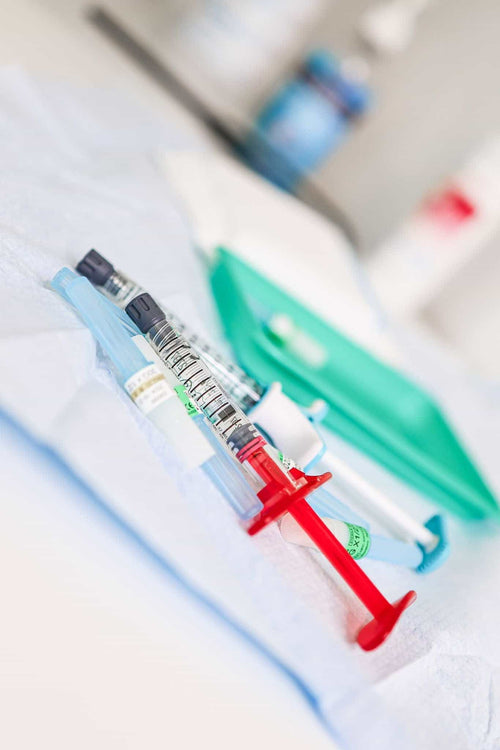What Hurts More Lip Filler Or Tattoo
Schedule a Dermal Filler Consultation with Dr. Laura Geige Now
Lip Filler
Schedule a Dermal Filler Appointment with Dr. Laura Geige Now
Type of Discomfort
Lip fillers are designed to augment lip volume and shape using dermal fillers, typically hyaluronic acid (HA) gel.
Here’s a breakdown of the discomfort associated with lip fillers:
- Numbing Cream: A topical anesthetic is usually applied prior to the procedure to minimize pain. This significantly reduces the amount of actual pain experienced during injection.
- Pricking Sensation: Despite numbing, you’ll likely feel a series of small pricks as the filler needle is inserted into the lips.
- Pressure and Stretching: As the filler is injected, you might experience pressure and slight stretching sensations in your lips.
- Swelling and Tenderness: After the procedure, common side effects include swelling, redness, tenderness, and bruising. This can last for a few days and may increase discomfort.
The level of discomfort varies greatly from person to person. Factors influencing this include:
- Individual Pain Tolerance: Everyone’s pain threshold is different.
- Experience with Injections: Prior experience with injections, such as for Botox or other fillers, may make the process less daunting.
- Injection Technique:**
A skilled injector can minimize discomfort by using precise techniques and appropriate needle sizes.

It’s important to discuss your concerns about pain with your injector beforehand so they can address them and provide appropriate numbing techniques.
Recovery Time and Aftercare
Lip fillers are a minimally invasive cosmetic procedure that involves injecting hyaluronic acid gel into the lips to enhance their size, shape, and fullness. Unlike lip tattoos, which involve inserting permanent ink pigments, lip fillers are temporary, typically lasting 6-18 months depending on individual factors.
Pain Levels:
Both lip filler injections and lip tattoos can be painful, but the level of pain varies significantly from person to person. Some individuals may experience only mild discomfort during the procedure, while others may find it more intense.
Lip Fillers:
- Pain level: Generally described as a stinging or pinching sensation.
- Topical anesthetic: Often applied before injections to minimize pain.
Lip Tattoos:
- Pain level: Can be more intense and prolonged than lip fillers, often compared to getting a tattoo on other body parts.
- Local anesthetic: Used during the procedure to numb the area.
Recovery Time:
Lip fillers typically have a quicker recovery time compared to lip tattoos.
Lip Fillers:
- Immediately after injections: Mild swelling, redness, and bruising are common and usually subside within a few days.
- Full recovery: Most individuals can return to normal activities immediately or within 24 hours.
Lip Tattoos:
- Initial healing: Takes about 2-3 weeks with potential for scabbing and flaking.
- Full results: Visible after several months as the ink settles into the skin.
Aftercare Instructions:
Both lip fillers and tattoos require specific aftercare to ensure proper healing and optimal results.
Lip Fillers:
- Avoid touching or picking at the injected area.
- Apply ice packs for 10-15 minutes at a time to reduce swelling.
- Stay hydrated by drinking plenty of water.
- Use lip balm to keep lips moisturized.
- Avoid strenuous activity and extreme temperatures.
Lip Tattoos:
- Keep the tattooed area clean and dry.
- Apply a thin layer of ointment as instructed by your tattoo artist.
- Protect the tattoo from sunlight.
- Avoid swimming or soaking in water for several weeks.
It is essential to consult with a qualified and experienced medical professional, such as a dermatologist or plastic surgeon, before undergoing any cosmetic procedure. They can assess your individual needs and provide personalized recommendations based on your skin type, health history, and desired outcome.
Potential Complications
Lip fillers are a popular cosmetic procedure designed to enhance lip size, shape, and definition. They involve injecting hyaluronic acid (HA) gel into the lips. Hyaluronic acid is a naturally occurring substance in the body that helps hydrate and plump skin.
**Pain Management** during lip filler injections typically involves topical numbing cream applied to the lips prior to the procedure. Some practitioners may also offer local anesthetic injections for additional pain relief.
While many people experience only mild discomfort, described as a stinging or pinching sensation, some individuals may find the procedure more painful than others. Factors influencing pain perception include individual pain tolerance, injection technique, and the amount of filler injected.
**Potential Complications** associated with lip filler injections, although generally rare, can occur. These can be broadly categorized as:
* Immediate complications:
– *Swelling* and *bruising* are the most common side effects, usually resolving within a few days.
– *Redness* may also occur, typically subsiding within a day or two.
– *Discomfort* and tenderness at the injection sites are expected but should gradually subside over time.
– **Infection:** Although rare, infection can occur if proper sterilization techniques are not followed. Signs of infection include increasing pain, redness, swelling, pus discharge, or fever.
* Delayed complications:**
– *Asymmetry* may arise if the filler is not evenly distributed.
– *Lumps or bumps* can form if the HA gel is not properly dispersed.
– *Granuloma formation:* In rare cases, small lumps (granulomas) may develop in response to the body’s reaction to the filler material.
* Vascular complications:**
– *Injection into a blood vessel* can occur, leading to serious complications such as tissue damage or blindness if the filler blocks blood flow.
– It’s crucial that practitioners are well-trained in vascular anatomy to minimize this risk.
Important Note:**
Choosing a qualified and experienced injector is essential to minimize the risk of complications. Always consult with a licensed medical professional who has expertise in injecting dermal fillers to ensure your safety and desired results.
Reserve a Dermal Filler Session with Dr. Laura Geige Now
Tattoos
Pain Levels and Factors Influencing It
Tattoos and lip fillers both involve injections into the body, but they target different tissues and utilize different techniques, leading to variations in pain perception.
Pain during a tattoo involves the sensation of needles repeatedly puncturing the skin’s top layers (epidermis) and depositing ink into the dermis, the deeper layer. The feeling is often described as a scratching or burning sensation.
Lip fillers, on the other hand, involve injecting hyaluronic acid gel into the lips to plump them up. This process involves injections into the delicate tissue of the lips, which can be more sensitive than thicker skin areas.
Several factors contribute to pain levels during both procedures:
Pain Tolerance: Individual pain thresholds vary greatly. Some people have a higher tolerance for discomfort than others.
Location: Tattoos in bony or sensitive areas, like ribs, ankles, or fingers, tend to be more painful due to less fat and muscle cushioning the nerves. Similarly, certain areas of the lips (like the Cupid’s bow) are more sensitive than others.
Size and Scope: Larger tattoos or multiple injections for lip fillers will naturally involve a longer procedure, potentially increasing discomfort.
Artist Skill and Technique:** An experienced tattoo artist can minimize pain by using proper needle techniques and maintaining consistent pressure.
Numbing Creams: Both tattoo artists and aesthetic practitioners often offer topical numbing creams to reduce discomfort.
Psychological Factors: Anxiety or fear about the procedure can heighten pain perception, while relaxation techniques can help manage it.
In general, both tattoos and lip fillers involve some degree of pain, but the experience is subjective and influenced by individual factors.
While tattoos might be associated with a more intense and prolonged sensation, lip fillers can be more acutely painful due to the sensitivity of the area.
Healing Process and Aftercare Risks and Side Effects
Tattoos involve injecting ink into the dermis, the second layer of skin. This process naturally causes tissue trauma and inflammation.
Immediately after getting a tattoo, you’ll experience some pain, often described as a scratchy or burning sensation.
The healing process typically lasts about two to four weeks.
During this time, the body works to repair the damaged tissue, and the new ink becomes embedded in the dermis.
It’s crucial to follow proper **aftercare instructions** to minimize discomfort and promote optimal healing.
This includes:
– Gently washing the tattoo with mild soap and water.
– Keeping it moisturized with a fragrance-free lotion.
– Avoiding scratching or picking at the tattoo.
– Protecting the tattoo from sunlight.
Failing to properly care for your new tattoo can lead to several **risks and side effects**, including:
– Infection:**
Bacteria can enter the open wounds created by the tattooing process, leading to infection.
Signs of infection include redness, swelling, pain, pus discharge, or fever.
– Allergic reaction:**
Some people may be allergic to the ink used in tattoos.
An allergic reaction can manifest as itching, rash, or swelling around the tattoo.
– Scarring:**
Improper healing can result in scarring.
– **Ink bleeding:**
The ink may migrate out of the tattoo site during the healing process.
– Granuloma formation:**
Small, hard bumps called granulomas can form around the tattoo if the body reacts to the ink.
These are typically harmless but can be unsightly.
Lip fillers and tattoos are both minimally invasive procedures that involve injecting substances into the skin.
While lip fillers primarily target subcutaneous tissue, tattoos penetrate deeper into the dermis. This difference in depth likely contributes to the perception that tattoos hurt more.
Dejour Magazine Clover Design Online Otherwheres Magazine N City Magazine
- What Hurts More Lip Filler Or Tattoo - December 19, 2024
- Downturned Smile Treatment Near Esher, Surrey - December 14, 2024
